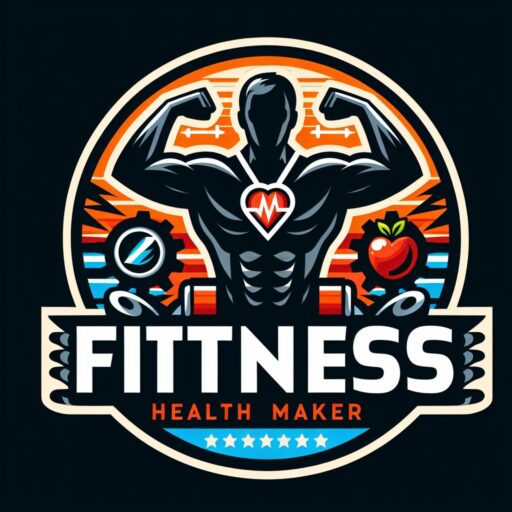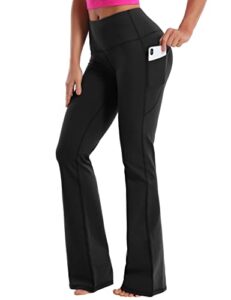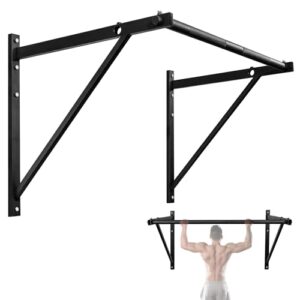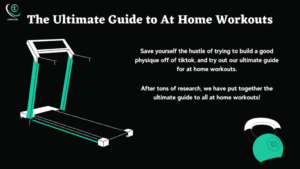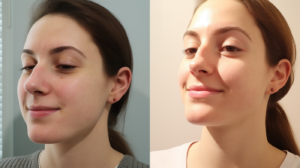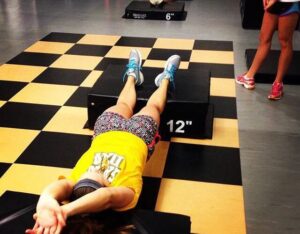Dynamic stretching and static holds are key strategies for improving flexibility and mobility. Incorporate exercises like lunges, hamstring stretches, and arm circles into your routine for best results.
Achieving greater flexibility and mobility is essential for a well-rounded fitness regimen. These physical qualities not only enhance your range of motion but also aid in injury prevention and overall physical performance. To cater to these needs, specific stretches have been designed to target muscle groups throughout the body.
From yoga-inspired poses that lengthen the spine and open the hips to Pilates exercises that focus on core strength and stability, there’s a variety of options to choose from. Regularly stretching aids in maintaining supple joints and muscles, leading to better posture, balance, and ease in everyday movements. Whether you’re an athlete or simply looking to stay active, integrating stretches into your daily routine can provide tremendous benefits to your physical health and well-being.
Importance Of Flexibility And Mobility
The Importance of Flexibility and Mobility cannot be overstated. A body that can bend and move at will lives a healthier, more active life. Imagine reaching high shelves, twisting to zip up a dress, or simply playing tag with your kids without a hitch. Flexibility and mobility make these everyday actions easier and less prone to injury. Embracing stretches that enhance these traits is vital. It can lead to a better quality of life no matter your age. Let’s dive into why keeping your body flexible and mobile is essential.
Benefits For Physical Health
Why should you care about being bendy? The benefits for physical health are numerous:
- Improves posture and balance.
- Reduces the risk of injuries by increasing joint range of motion.
- Aids in back pain relief by strengthening core muscles.
- Enhances blood circulation for better nourishment of cells.
- Decreases muscle soreness post-exercise.
- Lowers stress levels by releasing muscle tension.
Enhancement Of Athletic Performance
For the athletes out there, flexibility and mobility are your secret weapons. They lead to:
- Quicker and more powerful muscle contractions.
- Increased efficiency in movement patterns.
- Better endurance, resulting in improved overall performance.
- Lower risk of sports-related injuries
Consistent stretching routines enhance agility, speed, and muscular coordination. Think about a sprinter in their starting blocks or a gymnast performing a flawless routine. The common thread? Exceptional flexibility and mobility.
Warm-up: Preparing Your Body
Starting your workout with a warm-up is essential for a successful exercise routine. It prepares your body, reduces injury risk, and enhances performance. Let’s dive into effective warm-up stretches and their importance.
Dynamic Stretches For Starting Out
Dynamic stretches get your muscles ready for the action ahead. Unlike static stretches, these keep you moving. They send blood to the areas you’ll soon work on. Start slow and then pick up the pace.
- Arm Circles – Begin with small circles and gradually increase the size.
- Leg Swings – Hold onto a wall and swing one leg forward and back then side to side.
- Lunges with a Twist – Step forward into a lunge and rotate your upper body towards the stepped-out leg.
The Role Of Warm-up In Injury Prevention
Warming up is key to keeping injuries at bay. It prepares your joints, muscles, and mind for physical activity. Ignoring a warm-up can lead to strains or sprains. So, give your body the heads-up it needs.
Consider these points:
| Warm-Up Component | Benefit |
|---|---|
| Increased Blood Flow | Muscles receive more oxygen and nutrients. |
| Raised Body Temperature | Muscles become more elastic, reducing the risk of tears. |
| Enhanced Neural Function | Improves coordination and reaction times. |
Upper Body Stretches
Our daily routines can tighten muscles, reducing flexibility and mobility. Simple stretches keep our upper body limber. Quick and effective, these stretches can relieve stress and improve posture. Let’s dive into some stretches that target the upper body.
Shoulder And Neck Relief Techniques
Shoulders and neck often bear the brunt of stress. It’s time to ease that tension with some stretches.
- Ear to Shoulder Stretch: Sit up straight, drop one ear to your shoulder, hold for 15 seconds, switch sides.
- Shoulder Rolls: Roll your shoulders slowly in a circular motion, 10 times forward and 10 times backward.
- Neck Rotations: Turn your head slowly from left to right, and up and down. Repeat five times.
Arm And Wrist Flexibility Exercises
Arms and wrists are crucial for daily tasks. Keep them flexible with these exercises:
| Exercise | Description |
|---|---|
| Wrist Stretches: | Extend an arm, palm up, gently press back on fingers with the other hand. Hold for 15 seconds, switch sides. |
| Arm Across Chest Stretch: | Bring one arm across your chest, lightly press arm closer to your chest with the other hand. Hold for 15 seconds, switch. |
| Triceps Stretch: | Raise one arm, bend at the elbow to touch your back, use the other hand to gently push the elbow. Hold for 15 seconds, switch. |

Credit: www.nutrisense.io
Lower Body Stretches
Ready to enhance your flexibility and mobility? Let’s focus on your lower body. Effective stretches can improve your daily function and boost your athletic performance. We’ll explore hip openers and leg stretches that target key muscles for a more supple physique.
Hip Openers For Optimal Range Of Motion
Hip mobility is vital for ease of movement. Open hips help with balance and prevent discomfort. Try these stretches:
- Pigeon Pose: Targets glutes and hip flexors. Sit with one leg bent in front and the other extended back.
- Butterfly Stretch: Loosens tight inner thighs. Sit with the soles of your feet together and gently press knees down.
- Frog Stretch: Open your hips on the floor. Place knees wide apart and shift your weight back and forth.
Leg Stretches For Strength And Flexibility
Leg stretches help prevent injuries and enhance muscle recovery. Focus on these for stronger, more flexible legs:
- Standing Hamstring Stretch: Eases the back of your legs. Stand and cross one foot in front of the other, bending at the hips.
- Quadriceps Stretch: For thigh muscles. Stand and pull one foot toward your buttock, keeping knees together.
- Calf Raises: Strengthen and stretch calves. Stand on the edge of a step and raise and lower your heels.
Core And Back Stretches
Greater flexibility and mobility start with a solid foundation, and that’s the core and back. Engaging in regular stretching can lead to remarkable health benefits. These stretches aim to enhance core strength and spine health. They can help reduce pain, prevent injuries, and improve overall athletic performance. Let’s explore how stretching these crucial areas can transform your well-being.
Improving Posture And Aligning The Spine
Maintaining a straight, aligned posture is vital for minimizing strain on your back. It affects how you walk, sit, and stand. Effective core and back stretches can realign the spine and enhance stability. They ensure that your posture supports a healthy back and body.
Essential Stretches For A Strong Core
A robust core is the centerpiece for any movement you make. It houses your body’s essential organs and central nervous system. Here’s a list of essential stretches recommended for a strong and supple core:
- Cat-Cow Stretch – Arch and round your back for a flexible spine.
- Plank – Hold a straight line from head to heels for core endurance.
- Seated Twist – Twist your torso for better waist mobility.
- Bridge Pose – Lift your hips for a stronger lower back.
Regular practice of these stretches pays off in improved core stability and a healthier spine. Remember, consistent effort leads to lasting progress.

Credit: www.pinterest.com
Cool-down: Bringing It Full Circle
The Cool-Down: Essential in rounding off any vigorous workout, the cool-down phase brings your body full circle. It’s crucial for recovery, helping to rebuild muscle strength and boost flexibility. Let’s guide those tired muscles gently back to a state of rest with structured static stretches and mindfulness practices that maximize the benefits of your workout routine.
Static Stretches To End Your Routine
After a heart-pumping workout, static stretches ease your muscles into a relaxed state. This section outlines different stretches to help maintain and improve flexibility:
- Hamstring Stretch: Sit on the ground, extend one leg out, and reach for your toes. Hold for 20 seconds.
- Quad Stretch: Stand upright, pull one foot back towards your glutes. Use a wall for balance if needed.
- Shoulder Stretch: Bring one arm across your body, gently pull with the other arm. Feel the stretch in the shoulder.
- Triceps Stretch: Reach one arm overhead, bend at the elbow, and use the opposite hand to press gently.
Using Mindfulness To Maximize Benefits
Mindfulness paired with stretching takes your cool-down to new heights. It allows the body and mind to synchronize, enhancing the healing process:
- Deep Breathing: Focus on your breath. Inhale slowly, then exhale, envisioning tension leaving your body.
- Body Awareness: Pay attention to each muscle group as you stretch. Notice where you feel tight.
- Gratitude Pause: End your session by thinking of one thing you’re grateful for today. This positive reflection can encourage a more centered mindset.

Credit: www.youtube.com
Frequently Asked Questions Of Stretches For Flexibility And Mobility
What Stretches Improve Flexibility?
Improving flexibility involves consistent practice of full-body stretching routines, focusing on major muscle groups like hamstrings, shoulders, and hips.
How Often Should I Stretch For Mobility?
Aim to stretch 3-5 times a week for mobility, incorporating dynamic stretches before workouts and static stretches afterwards for optimal results.
Can Stretching Increase Injury Risk?
Proper stretching, when done correctly and with appropriate techniques, decreases the risk of injury by enhancing flexibility and mobility.
Why Does Flexibility Decrease With Age?
Flexibility decreases with age due to loss of muscle elasticity and a reduction in joint fluid, making regular stretching increasingly important.
Are Static Or Dynamic Stretches Better?
Both static and dynamic stretches are valuable; dynamic stretches are ideal for warming up, while static stretches are beneficial post-exercise for cooling down.
What Is The Best Time To Stretch?
The best time to stretch is when the muscles are warm, typically after a light cardio warm-up or at the end of a workout session.
Conclusion
Embracing daily stretching can significantly enhance your flexibility and mobility. It’s the key to a more agile, pain-free life. Start with these simple moves and feel the change. Remember, consistent effort paves the way for lasting health. Unlock your body’s potential and begin your journey to a more limber self today.
